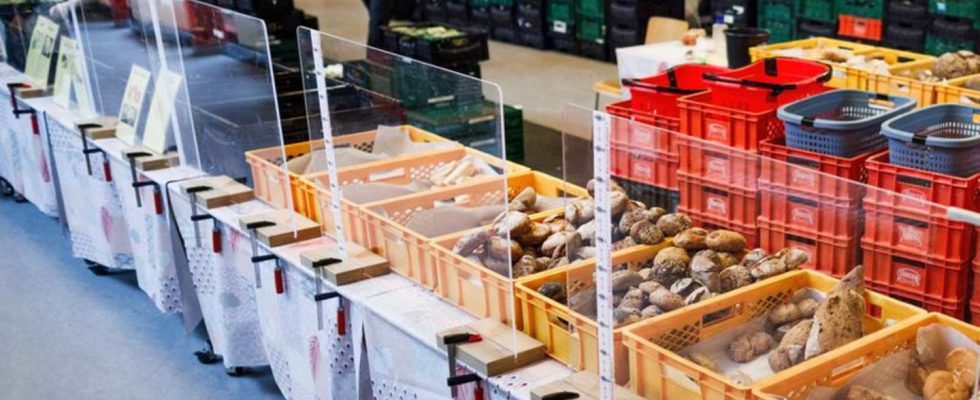Company
Inflation and electricity prices: Tafel customers suffer the consequences
Employees stand in the food counter in the Paul-Schneider-Haus distribution point of the Berliner Tafel. photo
© Carsten Koall/dpa
Because of price increases, more and more people are dependent on the panels against poverty and food waste. At the same time, the quantity of goods offered is decreasing.
According to figures from the Tafel Deutschland association, around a third of the almost 970 food banks stopped accepting new customers in 2022. Almost two thirds had to reduce the amount of food per household. At the same time, digitization is moving into the food banks with a new platform for even food distribution.
“The panels are a seismograph for social changes,” said Sabine Werth, who founded Germany’s first panel 30 years ago in Berlin and has chaired the panel ever since. At their federal meeting from July 6th to 8th in Mannheim, the delegates of the Tafel elect a new board. Association leader Jochen Brühl no longer occurs.
Distribution points cannot cover consumption needs
Since the beginning of the war in Ukraine and the price increases, the social institutions have experienced a real run: According to a survey from 2022, 40 percent of the food banks have around 50 percent more customers, and one in five even up to 100 percent. These include more and more customers from medium-sized companies who have lost their jobs due to Corona, are on short-time work or had to give up their self-employment, as Werth observed.
With a nearly 70 percent drop in merchandise picked up by volunteers, focus is shifting to distribution. The Leibniz Center for European Economic Research (ZEW) in Mannheim and Tafel Germany have developed a digital platform for this purpose.
The aim is to bring the approximately 237,000 tons of food collected annually to men and women in a more targeted manner. “So far, some dispensaries have not been able to cover their customers’ consumption needs, while the available donations at other dispensaries exceed consumption needs,” explains Thilo Klein from ZEW.
The platform provides all donation flows in real time and centrally. The needs of the distribution points are determined using a distribution algorithm. According to the ZEW, 44 food banks are already using this digital solution and 75 are preparing for it.

